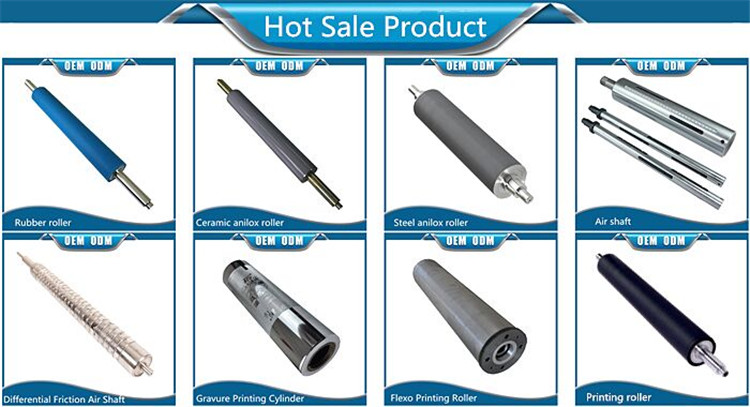Jctprint Machinery Co., Ltd
1.Roller material: 45# high quality seamless tube with uniform wall thickness, High quality alloy steel seamless pipe, precision forging.
2.Inner structure:hot pressing, cold runner, clip type design.
3.Surface can be all kinds of geometric figure, including leather grain, wood grain, stripes, reticulate, etc.
4. The final surface is plated with hard chrome or other treatments, hardness can reach HRC58-62.
5.Strict quality control system and quality inspection before shipment.

Embossing roller is suitable for pressing concave and convex patterns such as plastic sheet, film, aluminum foil, leather, hard board, wallpaper, floor tile, glass, paper, etc., to improve the product surface aesthetics, strengthen anti-counterfeiting, trademark protection and other effects. And according to customer requirements to develop different patterns of embossing rollers.

Application Range:
Production Process:
1. The material of the roller body is generally selected from high-quality seamless steel tubes (special materials can be customized according to user needs). After boring and grinding the inner hole, the thickness of the tube wall is uniform, and then it is made by welding, stress relief treatment, turning, grinding, and finishing;
2. Correct the static balance and dynamic balance treatment; the coaxiality of the finished roller ≤0.02mm;
3. According to the pattern, different processing techniques are adopted to achieve a clear pattern, exquisite pattern, rich levels and precise size of the extruded product.
4. The final surface is plated with hard chrome or other treatments, and the hardness can reach HRC58-62.

Etching technology
Treatment technology for removing metal from the metal surface by using the erosion effect on the metal surface. In this way, various patterns are formed on the metal surface, which is called etching processing, and the mold industry is called erosion processing, also called bite processing or "corrosion processing".
l Electrolytic etching
The mother mold is used as the conductive cathode, and the electrolyte is used as the medium, and the erosion removal method of etching is concentrated on the processed part.
l Chemical etching
Using chemical resistant coating to remove etching corrosion and concentrate on the desired parts.
Photo-etching process (photo-etching process) uniformly forms a layered photoactive chemical resistant film on the metal surface, and then passes through the original film, exposes it with ultraviolet rays, etc., and then applies a development process. Form the coating layer of the chemical resistant coating of the desired shape, and then use the acid or alkali solution of the etching bath to chemically or electrochemically etch the exposed portion to dissolve the gold
Is a processing technology.
* Characteristics of etching technology
Sandblasting process
Sand blasting uses compressed air as the power to form a high-speed jet beam to spray the shot material (shot glass beads, steel shot, steel sand, quartz sand, emery, iron sand, sea sand) to the surface of the workpiece to be processed at high speed, so that the workpiece The mechanical properties of the outer surface of the surface have changed. Due to the impact and cutting action of the abrasive on the surface of the workpiece, the surface of the workpiece has a certain degree of cleanliness and different roughness, so that the mechanical properties of the surface of the workpiece are improved, so the workpiece is improved The anti-fatigue property increases the adhesion between it and the coating, prolongs the durability of the coating film, is also conducive to the leveling and decoration of the coating, and removes the impurities, noise and oxide layer on the surface, while making the medium The surface is roughened to make the residual stress on the surface of the substrate and improve the hardness of the surface of the substrate.
Embossing roller blasting can be divided into:
l Full gloss (100%): glass sand embossing roller
l Semi-gloss (50%): 50% glass + 50% gold steel embossing roller
l Matte (0%): Gold steel sand (alumina sand) embossing roller
Due to the different resin materials used and the different injection molding conditions, it is difficult to completely adjust the gloss with only one shot blasting process, so it must be repeated many times.



Q: Possible make them up to the requested power?
A: Of course
Q: How much type of emboss roller you have?
A: Calendering roll: mirror calendering roll, embossed calendering roll, chamotte sand calendering roll, matte calendering roll...
Casting roll: matte roller, mirror roller...
Transmit coating roll: net embossed roller, steel alloy roller, stainless steel roller...
Q: DO you have mini order?
A: one piece
Q: Which kind of trade item will do?
A: EXW,FOB,CNF,CIF,FCA---
Q: What should i let you know when i have a require?
A: The design,width,length,technology need.